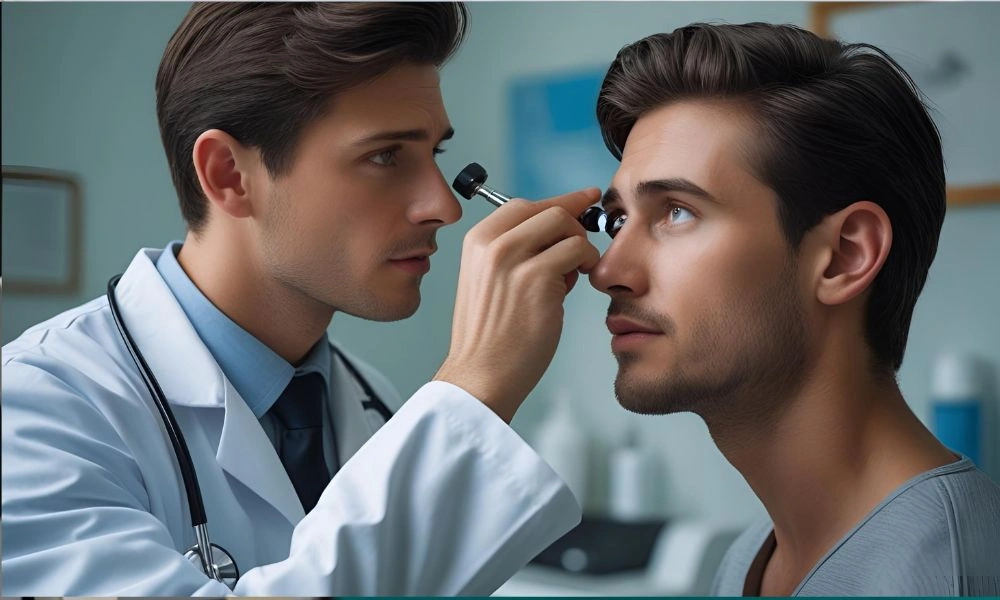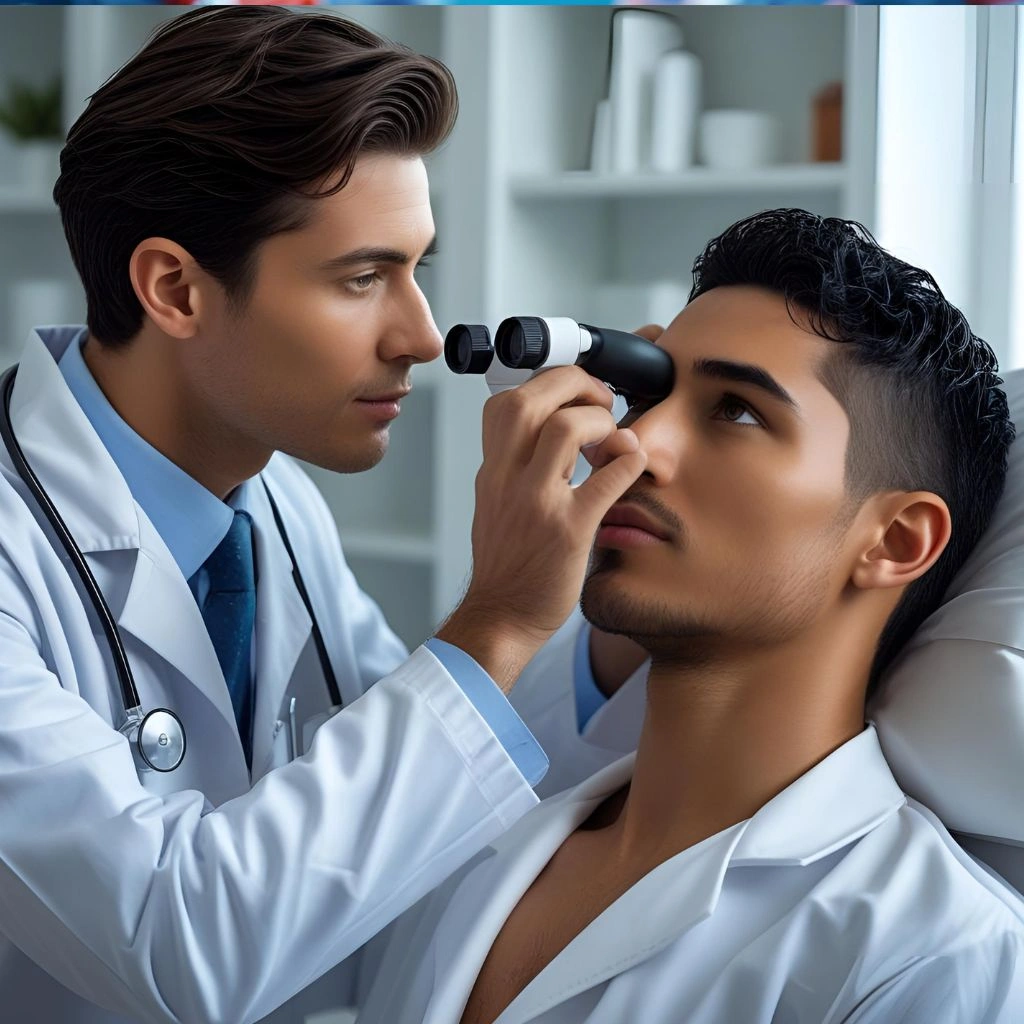
Why are my eyes constantly watering without clear reason?
Watery eyes—also referred to as epiphora—may be more than a temporary annoyance. You may be a patient struggling with persistent eye-watering or a medical practitioner seeking to decide on the most appropriate course of treatment; regardless, it is crucial to know why. As telemedicine becomes increasingly streamlined, so too are clinics and hospitals refitting their systems in order to better deal with patient records and treatments. On Sehat website, we not only provide health education but also equip healthcare professionals with sophisticated tools such as Sehat Pro.
Let’s investigate all you want to know about watery eyes: the reasons, natural solutions, and when you should engage a medical professional.
What Are Watery Eyes?
Watery eyes happen when there’s an overproduction of tears or inadequate draining of tears. While tears serve to moisten the eyes and shield them from irritants, an overabundance causes fuzzy vision, irritation, and discomfort. It affects individuals of any age but is especially prevalent in babies and individuals above 60 years.
What Causes Watery Eyes
Watery eyes can be brought about by a vast array of causes, from environmental stimuli to underlying illnesses.
1. Allergies
Pollen, dust mites, animal dander, and mold are all capable of inducing allergic reactions leading to watery eyes. Allergic conjunctivitis may be accompanied by redness, itching, and swelling.
2. Eye Infections
Conjunctivitis (pink eye) or keratitis may be caused by infections and lead to inflammation and overproduction of tears. Such infections can need medical attention.
3. Obstructed Tear Ducts
When tear ducts are clogged, tears are unable to drain normally, so they overflow. This is normal in infants but can occur in adults as a result of trauma or infection.
4. Dry Eyes
Dry eye syndrome has the odd effect of making the eyes water heavily. When the eyes are excessively dry, they will overflow and make more tears.
5. Foreign Objects or Irritants
Dust, smoke, wind, or even a pesky little eyelash caught in the eye can cause tearing as a defense mechanism.
6. Digital Eye Strain
As a programmer or one who spends extended periods working at a screen, you’re familiar with digital eye strain. This new lifestyle disorder can irritate eyes and cause increased tear flow.
7. Eyelid Problems
Eyelid malpositions like entropion (turning in) or ectropion (turning out) may block the draining of tears properly, resulting in persistent tearing.
Symptoms That Follow Watery Eyes:
Watery eyes never occur alone. They are frequently accompanied by other symptoms that will help identify the cause:
- Redness
- Itching or burning
- Blurry vision
- Swelling of the eyes
- Formation of crust (particularly with bacterial infections)
- Sensitivity to light
When Are Watery Eyes a Cause for Concern?
Bilateral and occasional tearing is usually not a cause for concern. Any persistent or severe symptom, however, may point to an underlying problem that should be examined by a medical professional. Patients should be prompted to consult a doctor and a clinic if they have the following symptoms:
- Eye pain or trauma
- Vision loss
- Yellow or green discharge
- Worsening swelling
- Sensitivity to light
- No improvement after home remedies
With the use of a patient management software such as Sehat Pro, clinics are able to capture symptoms, monitor patient history, and determine timely interventions.
Home Remedies for Watery Eyes:
Many individuals try home care before visiting the clinic. Below are some efficacious natural remedies physicians can prescribe or clinics can record as part of patient self-care procedures.
1. Warm Compresses
Using a warm compress is also effective in unclogging plugged tear ducts and calming irritated eyes. Soak a clean cloth in warm water, blot it dry, and apply it to closed eyes for 5–10 minutes.
2. Cucumber Slices
Cucumbers possess natural cooling and anti-inflammatory qualities. Placing slices on the eyes may alleviate irritation and encourage tear balance.
3. Rose Water
Gentle and natural, rose water can be taken as eye drops (if they are sterile) or compresses to soothe tired and runny eyes.
4. Blink More Frequently
For individuals using screens, encouraging them to blink more frequently or heed the 20-20-20 advice (every 20 minutes, look at something 20 feet away for 20 seconds) can minimize strain and watering.
5. Drink Plenty of Fluids
Dehydration can lower the quality of tears. Remind patients to drink enough water every day.
6. Tea Bags of Chamomile
Used and warmed tea bags used over the eyes possess anti-inflammatory abilities. They relieve irritation and restore eye balance with moisture.
7. Stay Away from Allergens
If allergies are responsible for causing watery eyes, it is essential to avoid usual suspects. Keep windows shut during periods of pollens in the air and wash bedding and soft furnishings regularly.
Medical Treatment of Watery Eyes
When home remedies fail, professional therapy is essential. Clinics and hospitals are able to employ tools such as Sehat Pro to handle these therapy steps with accuracy.
1. Medicated Eye Drops
Depending on the etiology (infection, allergy, or inflammation), antibiotic, antihistamine, or steroid eye drops may be prescribed by doctors.
2. Surgical Interventions
For structural abnormalities such as obstructed tear ducts or eyelid malpositions, small surgery steps may be needed to establish normal tear flow.
3. Punctal Plugs
For watery eyes caused by dryness, the placement of small plugs in the tear ducts can decrease drainage and keep eyes moist.
4. Lubricating Drops
Most doctors will prescribe artificial tears to replace the moisture film and minimize the irritation that leads to tearing reflex.
Watery Eyes Prevention: What Clinics Should Teach Patients?
Prevention is the cornerstone of eye health. Here’s what your clinic team should be teaching patients:
- Eye exams on a regular basis
- Screen hygiene maintenance
- Wearing protective eyewear outdoors
- Managing allergies
- Hygiene of the lenses (for contact lens users)
- Having a clean sleeping environment
With Sehat Pro, healthcare professionals are able to schedule automatic reminders, send pre-written instructions, and monitor each patient’s preventative education.
How Sehat Pro Empowers Clinics to Manage Eye Conditions Like Watery Eyes
In the fast-paced world of healthcare today, paper-based record-keeping and piecemeal communication can lead to delayed diagnosis and treatment. That’s where Sehat Pro, our end-to-end clinic management software, steps in.
Here’s how Sehat Pro helps small hospitals and clinics dealing with eye-related issues:
1. Electronic Patient History
Physicians can access comprehensive eye health history in one click, enabling them to recognize patterns—e.g., seasonal allergies or chronic dry eye.
2. Appointment Management
Streamline patient flow with a user-friendly appointment scheduling system that minimizes wait times and supports effective care delivery.
3. Clinical Notes and Treatment Tracking
Keep accurate clinical notes on symptoms such as watery eyes. Track treatments, monitor progress, and schedule follow-up reminders.
4. Automatic Prescription Printing
Print and store prescriptions for eye drops or medication from the system.
5. Education and Follow-Up
Send patients personalized educational materials and monitor who has received home care advice vs. who needs to be seen urgently.
6. SMS and Email Reminders
Encourage patients to follow up on prescription drops, attend appointment follow-ups, or hydrate—throughly scheduled text or email.
Final Thoughts: Better Eye Care Begins with Better Systems
Watery eyes may seem like a simple symptom, but for many, it can interfere with daily life and signal deeper health issues. Home remedies may offer temporary relief, but persistent cases demand medical intervention.
Clinics, physicians, and small hospitals need to implement smarter solutions to handle these cases cost-effectively—both from a diagnostic and administrative standpoint. Sehat Pro fills the gap between convenience and care with a streamlined, smart, and trust-worthy software platform for contemporary clinics.
Frequently Asked Questions (FAQ)
Watery eyes are commonly caused by allergies, infections, blocked tear ducts, or eye strain from prolonged screen use. Identifying the root cause is important for effective treatment, which clinics can manage efficiently using tools like Sehat Pro.
Yes, mild cases can be treated at home using warm compresses, hydration, and avoiding allergens. However, if symptoms persist or worsen, a visit to a clinic is necessary. Sehat Pro helps clinics track which remedies patients have already tried for better follow-up care.
You should see a doctor if watery eyes are accompanied by pain, vision loss, discharge, or if symptoms persist for more than a few days. Clinics using Sehat Pro can schedule and manage follow-up appointments seamlessly.
In some cases, yes. While often harmless, persistent tearing can signal infections, eyelid disorders, or tear duct blockages. Early evaluation through a trusted clinic is recommended—and managing these cases is easier with Sehat Pro’s digital patient profiles.
Sehat Pro allows doctors to digitally document symptoms, prescribe treatments, monitor progress, and educate patients—all in one system. It streamlines eye care delivery, improves recordkeeping, and enhances patient satisfaction for clinics and hospitals.


